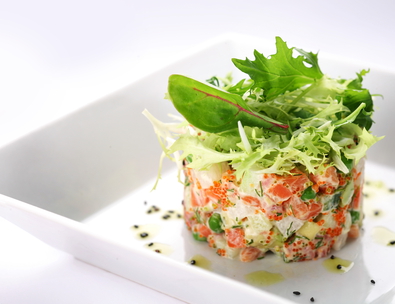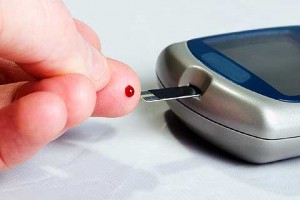Hi, there! If you are new to this site, or haven’t done so already, sign up for your weekly health news updates, along with tasty, quick and easy, healthy, fat burning, gluten free and Paleo recipes. Sign up here.
Men and women historically have always been attracted to a particular type of body shape in the opposite sex. There are biological reasons for this.
Men have always been drawn to curvy women, especially women with smaller waists and rounded hips. While waist and hip sizes may vary, historically, men have universally been attracted to women with a waist to hip ratio of about 66%, and curvy hips and thighs.
Yes, ladies, contrary to what many of us believe, men generally do not wish we looked like stick figures or rail thin models.
Unfortunately, the majority of today’s American women, especially younger women in their 20’s, have a waist to hip ratio of closer to 75%, meaning that the waist is about 75% of the total hip measurement. American women’s waist size is getting bigger.
Why is this? It has to do with the type of fats in our diet today.
The type of fat you eat gets stored in different parts of the body. Typically, fat from Omega 6 fats like the kind found in vegetable oils, grains and processed foods is stored more in the waist or belly. Fat from Omega 3 fats is more likely to be stored in the hips and thighs.
When women lose weight, it generally is lost in other parts of the body first.
Much to a woman’s frustration, the fat in the hips and thighs is usually the last to go, and the most difficult to lose, as the body stores this valuable fat here for purposes of pregnancy and breastfeeding.
According to Will Lassek, M.D., and Steven Gaulin, Ph.D. in the book, “Why Women Need Fat”, the fat that is stored in a women’s hips and thighs is rich in a very valuable substance that is concentrated in this part of the body. This fat is high in something called DHA—which is a component of the Omega 3 fatty acids in our diets.
DHA is extremely important for proper brain and nervous system function, as nerve cells are made primarily of this type of fat.
Omega 3 fats and DHA in our diets come from wild caught fatty fish, grass fed beef and dairy products, and free range chickens and eggs. But sadly, the North American diet and the diet of most civilized countries, is mostly grain-based and not only are our diets too high in grain based, processed foods, but beef cattle, dairy cows, and chickens that produce the meat, dairy, and eggs in our diet are also fed grain as well, making commercial meat and dairy way higher in Omega 6 fats, not Omega 3 fats.
(This may also be the reason for the rise in autism, ADHD and other issues related to brain health—our diet is very poor in Omega 3’s and DHA.)
So according to Mother Nature, mothers breast feed their children, and the fat in a mother’s milk is pulled from stored fat in the hips and thighs primarily.
Mens’ ancient biological brains are actually telling them that a woman with a smaller waist and curvy hips and thighs carries an abundance of the good fat, DHA from the Omega 3 fats in her diet. Since DHA is vital for the brain and nerve tissue, DHA means smarter, healthier children.
And other studies show that children and mothers who live in countries with have a high amount of Omega 3 fats in their diets, and higher DHA in their bodies, tend to score higher on tests of academic ability and intelligence. Some of these women from other countries have up to 4x more stored DHA in their bodies than American women. Not surprisingly, American children score 31st out of 64 countries on the same academic tests–much lower than the children from mothers with higher DHA, according to Lassek and Gaulin.
Today’s average American woman is about 20lbs heavier than the average woman in the 1970’s, with a much bigger waist (waist to hip ratio) measurement. Why the change?
The long answer has to do with a variety of things from extra large portions, high fructose corn syrup and sugar in everything to ‘supersizing’ and processed foods. But in terms of the type of fats in our diet and how our bodies store fat, it boils down to the kind of fat that is most prevalent in our diets right now.
Omega 3 and Omega 6 fats are considered “Essential Fatty Acids” and come from our diets. We depend on our food supply to get these fats, but unfortunately for most of us, our diets are overloaded with Omega 6 fatty acids, which come from vegetable oils, and grains, primarily.
The Standard American Diet contains up to 20x more Omega 6 fats than Omega 3 fats. That’s WAY more than the proper ratio we need to be healthy.
So, in order to get enough Omega 3 fatty acids, the average American must eat more of everything, just to get the right amount of Omega 3 fats.
And studies also show that Omega 3 fats are much more satisfying to the body and that we are hungrier after eating foods with Omega 6 fats,so that also leads to more eating.
And, Omega 6 fatty acids actually tend to be stored in the waist and around the belly, rather than the hips (and men store more belly fat as well), so our diets and the type of essential fatty acids we eat, ends up being a very big factor that determines our body shape.
So, ladies, if you want a smaller waist and curvier bottom, eat more Omega 3 fats from wild caught fish, grass fed meats and dairy, and free range eggs.
Cut way back on the Omega 6 fats, by avoiding all grains and vegetable oils. You not only will have a better body shape, but you will produce healthier, smarter children and YOUR brain will be healthier and function better as well.
The correct balance of Omega 3 fats to Omega 6 fats is crucial for our health and for survival, as well as a more attractive body.
Choose wisely!
If you liked the information here, and would like to STRAIGHT SCOOP on Diet and Health, Subscribe Here.
Till next time,
Stay healthy and lean and curvy!
References: Will Lassek, M.D., and Steven Gaulin, Ph.D, Psychology Today, Feb. 2012, and the book, “Why Women Need Fat”.
 Catherine (Cat) Ebeling RN BSN, is a back to basics diet and nutrition specialist. In addition to her advanced degree in nursing from a major medical school, she has spent the last 30 years intensely studying diet, health and nutrition. She also has a book titled “The Fat Burning Kitchen, Your 24 Hour Diet Transformation” that has sold over 60,000 copies worldwide, and has helped thousands of people transform their lives, lose weight and improve their health.
Catherine (Cat) Ebeling RN BSN, is a back to basics diet and nutrition specialist. In addition to her advanced degree in nursing from a major medical school, she has spent the last 30 years intensely studying diet, health and nutrition. She also has a book titled “The Fat Burning Kitchen, Your 24 Hour Diet Transformation” that has sold over 60,000 copies worldwide, and has helped thousands of people transform their lives, lose weight and improve their health.Her mission is to help others prevent disease and live their best life ever.
Nutrition made Easy. Simple.Smart.Nutrition.









